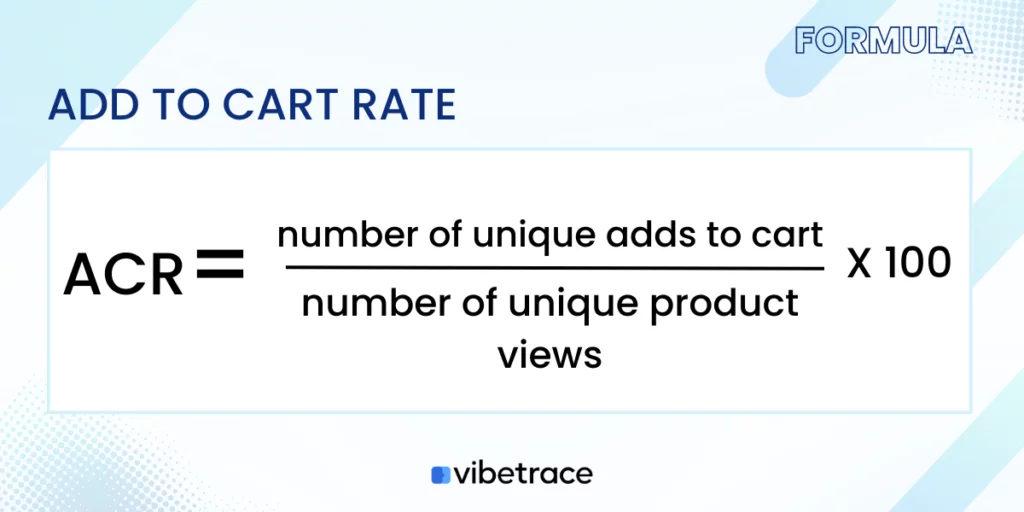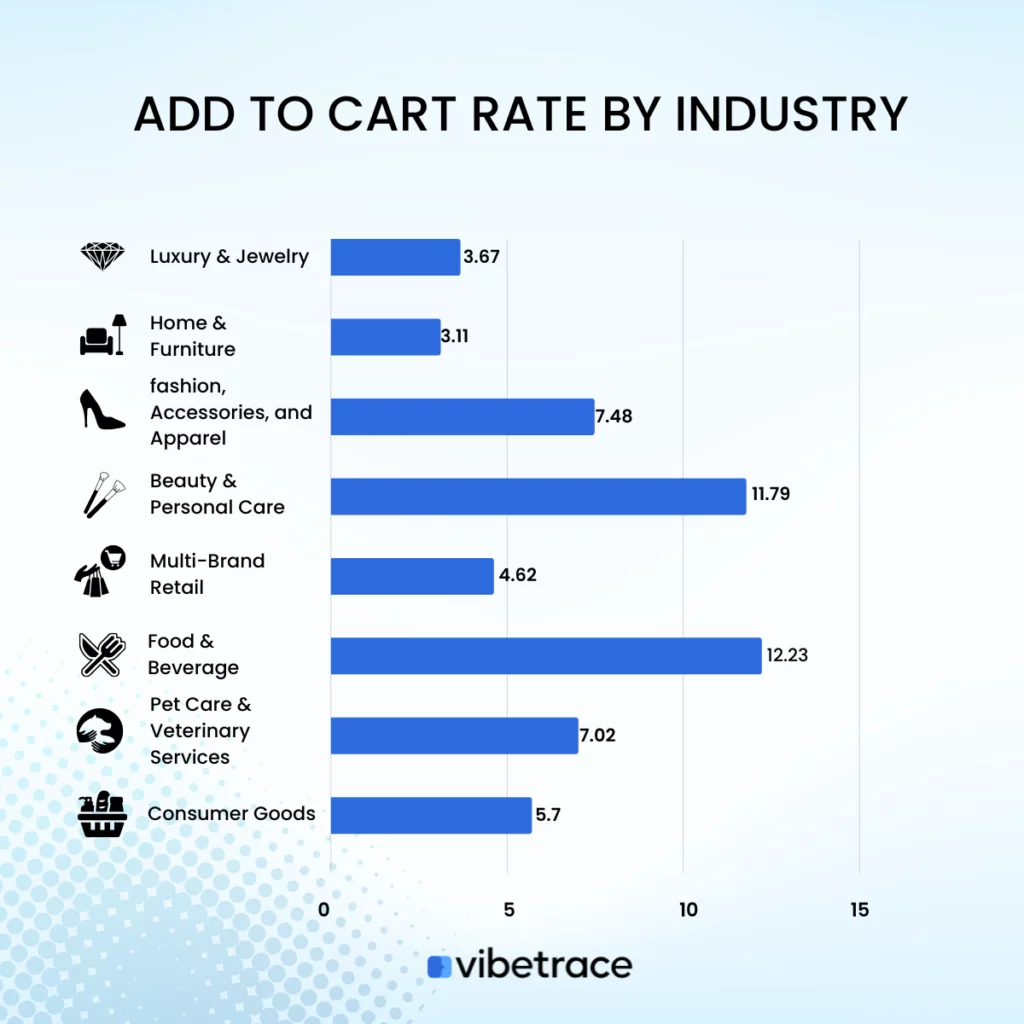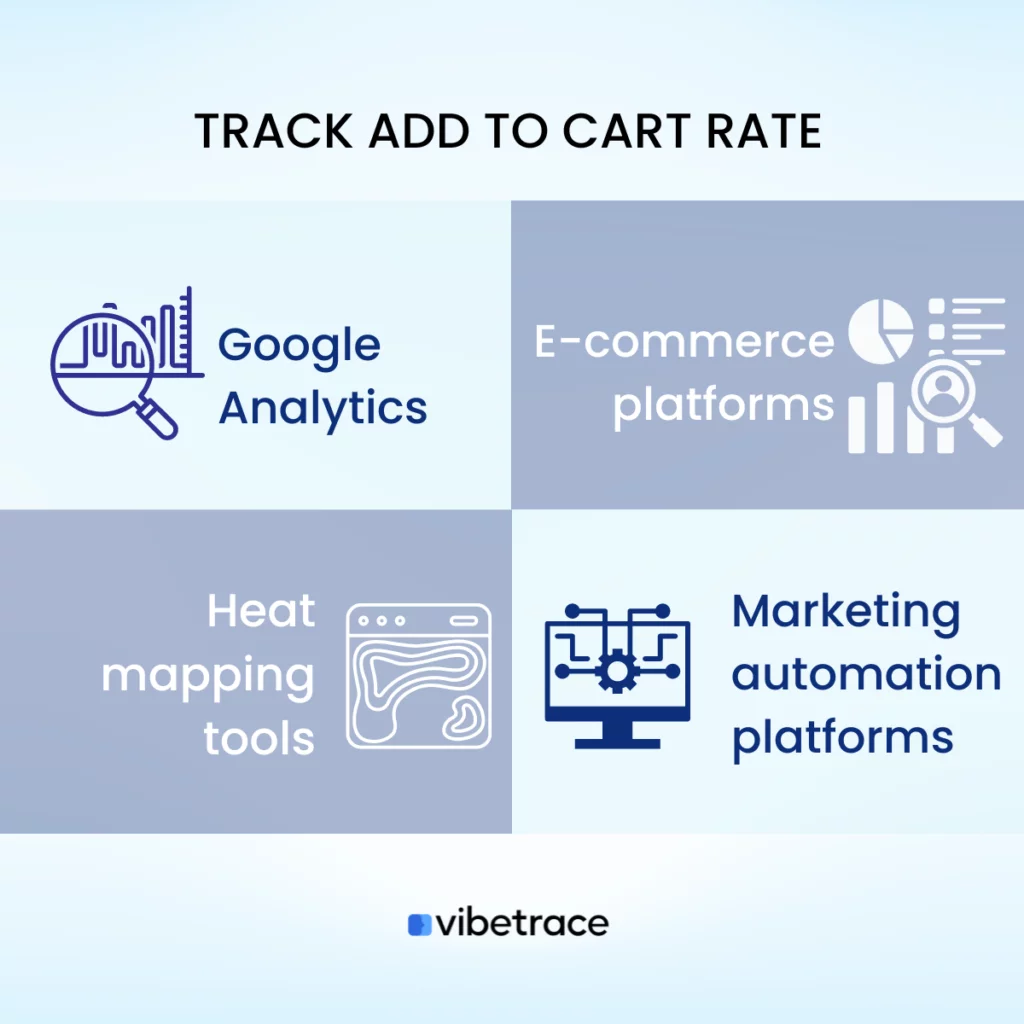Add-to-cart rate is a crucial metric that offers valuable insight into the success of your product selection.
Whether you are an established e-commerce business or just starting out, it is essential to track your customers’ journeys. Utilizing the add-to-cart rate can serve as an excellent indicator of your customers’ interest in the products you offer.
Continuously monitoring and analyzing your add-to-cart rate can help you determine which products are driving growth and which products may need to be removed or adjusted to improve overall sales.
What is Add-to-Cart Rate?
Definition of Add-to-Cart Rate
Add-to-Cart rate (ATC rate) is an ecommerce metric that measures the percentage of website visitors who add at least one item to their shopping cart after visiting a product page.
The add-to-cart rate is an important indicator of how well a website is converting visitors into potential customers and can help businesses identify areas for improvement in their online shopping experience.
Add-to-Cart Rate Formula

This formula calculates the percentage of unique product views that result in an add-to-cart action by a user on an e-commerce website.
Add-to-Cart Rate by Industry
Here’s the average add-to-cart rate by industry:

| Industry | Add to Cart Rate |
| Luxury & Jewelry | 3.67 |
| Home & Furniture | 3.11 |
| Fashion, Accessories, and Apparel | 7.48 |
| Beauty & Personal Care | 11.79 |
| Multi-Brand Retail | 4.62 |
| Food & Beverage | 12.23 |
| Pet Care & Veterinary Services | 7.02 |
| Consumer Goods | 5.7 |
The data provided, which is taken from Dynamic Yield shows the average add-to-cart rate for various industries.
The industries include Luxury & Jewelry, Home & Furniture, Fashion, Accessories, and Apparel, Beauty & Personal Care, Multi-Brand Retail, Food & Beverage, Pet Care & Veterinary Services, and Consumer Goods.
The average add-to-cart rate for Luxury & Jewelry is 3.67, which is the lowest among the industries listed. Home & Furniture has an average add-to-cart rate of 3.11, which is slightly lower than Luxury & Jewelry.
The Fashion, Accessories, and Apparel industry has the highest average add-to-cart rate at 7.48, followed by Beauty & Personal Care at 11.79, and Food & Beverage at 12.23. These industries have significantly higher add-to-cart rates than the other industries listed.
Multi-Brand Retail has an average add-to-cart rate of 4.62, while Pet Care & Veterinary Services has an average add-to-cart rate of 7.02. Consumer Goods has an average add-to-cart rate of 5.7.
The data suggests that the add-to-cart rate varies significantly between different industries. Industries such as Fashion, Accessories, and Apparel, Beauty & Personal Care, and Food & Beverage have higher add-to-cart rates, which could be due to factors such as strong branding, high product demand, and effective marketing strategies.
In contrast, industries such as Luxury & Jewelry and Home & Furniture have lower add-to-cart rates, which may be due to the higher price points or lower demand for their products. It is important to note that other factors, such as website design, product quality, and customer experience, can also significantly impact the add-to-cart rate.
How to track Add-to-Cart Rate?
There are several tools you can use to track add-to-cart rate, including:

Google Analytics: Google Analytics can track add-to-cart rate by setting up a custom goal in the platform. This will allow you to see how many visitors added items to their cart and completed a purchase.
E-commerce platforms: Many e-commerce platforms, such as Shopify and WooCommerce, have built-in analytics that can track add-to-cart rate. This can help you identify which products are performing well and which ones may need more attention.
Heat mapping tools: Heat mapping tools, such as Hotjar or Crazy Egg, can show you where users are clicking on your website and which areas are getting the most attention. This can help you identify which products are popular and which ones may need more promotion or visibility.
Marketing automation platforms: Marketing automation platforms, such as Marketo or Hubspot, can help you track add-to-cart rate as part of your overall marketing metrics. This can help you see how your marketing campaigns are impacting your e-commerce performance.
How often should you check Add-to-Cart Rate?
The frequency at which you should check your Add-to-Cart (ATC) Rate depends on your specific business needs and goals.
Generally, it’s a good idea to monitor your ATC rate regularly to understand how effectively your website or online store is converting visitors into potential customers. If you notice a decline in your ATC rate, it may indicate that there is an issue with your product page, website layout, or checkout process, and you can take steps to address those issues.
The frequency of monitoring your ATC rate may vary depending on the size of your business, the amount of traffic your website receives, and the frequency at which you make changes to your website or product offerings. It may be useful to check your ATC rate on a daily, weekly, or monthly basis to track trends and identify any sudden changes.
Add-to-Cart Rate Calculator
Do you want to calculate your Add to Cart rate? Use our simple calculator below.
Simple Add To Cart Rate Calculator
Number of viewed products:
Number of added to cart Products:
Add To Cart Rate:
= ?
Important Things about Add-to-Cart Rate
Add-to-cart rate is an important e-commerce metric that measures the percentage of website visitors who add a product to their shopping cart after viewing it. Here are some important things to know about add-to-cart rate:
Add-to-cart rate is the ratio of the number of visitors who added an item to their cart to the total number of visitors who viewed the item.
Indicator of appealing products: Add-to-cart rate is an important metric as it provides insight into how appealing your product is to potential customers. A high add-to-cart rate indicates that customers find the product attractive and are interested in buying it, while a low add-to-cart rate may suggest that the product is not as appealing to customers.
Includes various factors affecting the add-to-cart rate: There are several factors that can affect the add-to-cart rate, including the product price, product description, product images, user interface design, and overall website usability. These factors can impact a customer’s decision to add an item to their cart.
Has Relationship with conversion rate: Add-to-cart rate is often considered a leading indicator of conversion rate. A high add-to-cart rate indicates that a customer is interested in a product, and is more likely to complete the purchase, leading to a higher conversion rate.
Easy Optimization: By analyzing the factors that affect the add-to-cart rate, you can optimize your product pages and website to improve add-to-cart rate, leading to higher conversion rates and increased sales.
Metrics related to Add-to-Cart Rate
There are several metrics related to Add-to-Cart Rate that e-commerce businesses should track to better understand their website’s performance and optimize their conversion funnel. Here are a few key metrics:
Average Order Value
Vibetrace can help you improve your add-to-cart rate in several ways.
Vibetrace allows you to personalize your product recommendations and offers based on each customer’s browsing and purchase history.
This can increase the likelihood of customers adding items to their cart by showing them relevant products that match their interests and preferences.
Additionally, Vibetrace can automatically send targeted emails or push notifications to customers who have abandoned their carts, reminding them of the items they left behind and offering them incentives to complete their purchases.
This can help recover lost sales and improve the add-to-cart rate.
It can also use social proof to encourage customers to add items to their carts.
For example, businesses can display real-time notifications of recent purchases or product views to create a sense of urgency and increase the perceived value of the products.
Overall, Vibetrace can help you improve your add-to-cart rate by personalizing your marketing efforts, recovering abandoned carts, using social proof, and conducting A/B tests.
Furthermore, it can optimize your website or mobile app user experience to further improve the add-to-cart rate.

